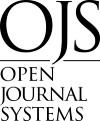Tecnologías de la información y la comunicación (TIC´s) como herramientas para la creatividad e innovación de los alumnos de negocios internacionales mercadotecnia de la universidad de Guadalajara: caso CUCEA
DOI:
https://doi.org/10.29105/vtga5.2-768Keywords:
TIC, Creatividad e InnovaciónAbstract
This work aims at the analysis of ICT at the higher level of students of the international business and marketing degree of the University of Guadalajara, to identify the use of new technologies in their classes and to assess them if they can directly impact their creativity and innovation in their academic training and future professional lives. Similarly, we want to know if teachers use ICT during their course in an easy way so that students take advantage of both their academic training and their professional life and if there are some delimitations when using technological tools.
Downloads
References
Abanto, L. M. S. (2018). CREATIVIDAD Y EDUCACIÓN. HACIA UNA MEJOR GESTIÓN DEL PENSAMIENTO. HELIOS, 1(1).
Augusto, C. (2010). Metodología de la investigación: administración, economía, humanidades y ciencias sociales. Bogotá d.c., Colombia: Pearson.
Bruniges, M. (2003). Developing performance indicators for ICT use in education: Australia's experience. Retrieved March 5, 2005, from http://www2.unescobkk.org/education/ict/v2/info.asp?id=13249
Coll, C. (2008). Aprender y enseñar con las TIC: expectativas, realidad y potencialidades. Recuperado de http://bibliotecadigital.educ.ar/uploads/contents/aprender_y_ensenar_con_tic0.pdf
Clark, J. & White, G. (2010). “Experiential Learning: A Definitive Edge In The Job Market”. American Journal Of Business Education, 3(2), 115-118. DOI: https://doi.org/10.19030/ajbe.v3i2.390
Damanpour, F. (1991), “Organizational innovation – a meta-analysis of effects of determinants and moderators”, Academy of Management Journal, Vol. 34 No. 3, pp. 555-90. DOI: https://doi.org/10.5465/256406
Ettlie, J.E. & Reza, E.M. (1992), “Organizational integration and process innovation”, Academy of Management Journal, Vol. 35 No. 4, pp. 795-827. DOI: https://doi.org/10.2307/256316
Fuchs, C. (2008). Internet and society: Social theory in the Internet age. New York: Routledge.
Fluck, A. (2003). Integration or Transformation? A cross-national study of information and communication technology in school education. Unpublished PhD dissertation, University of Tasmania. Retrieved March 24, 2005, from http://www.educ.utas.edu.au/users/afluck/thesis/
Hernández, R., Fernández, C., & Baptista, P. (2010). Metodología de le investigación (5ta ed.). México D.F.: McGraw-Hill Interamericana.
Laferrière, T. (1999). Benefits of using information and communication technologies (ICT)for teaching and learning in K-12/13 classrooms. Report for SchooloNet Program, Industry Canada. From http://www.schoolnet.ca/snab/e/reports/benefits.pdf
Lloyd, M. M. (2005). Towards a definition of the integration of ICT in the classroom.
López De la Madrid, M. C. (2007). Uso de las TIC en la educación superior de México. Un estudio de caso. Apertura, 7(7).
Lorenzi, N.M., Mantel, M.I. and Riley, R.T. (1912), “Preparing your organization for technological change”, Healthcare Informatics
Pérez, F. (2006). Aprendizaje clínico basado en la evidencia, e-learning e internet. Consulta realizada el 10 de julio de 2018. Versión electrónica disponible en: www.unizar.es/eees/innovacion06/COMUNIC _PUBLI/BLOQUE _ III/CAP _ III _ 17 .pdf.
Rivero, C., Chávez, A., Vásquez, A., & Blumen, S. (2016). Las TIC en la formación universitaria: logros y desafíos para la formación en psicología y educación. Revista de Psicología (PUCP), 34(1), 185-199. DOI: https://doi.org/10.18800/psico.201601.007
Ryan, M. (1999). Do computer learning environments just happen? QUICK, 74, pp. 8-9.
Sangrà, A. y González, M. (2004). La transformación de las universidades a través de las tic. Discursos y prácticas. Barcelona: Editorial Uoc.
Sampieri, R, Fernández, C, Baptista, P (2010). Metodología de la investigación (5ta. ed.). D.F., México: McGraw Hill.
Severin, E. (2013). Enfoques estratégicos sobre las tics en educación en América Latina y el Caribe. Santiago de Chile: Organización de las Naciones Unidas para la Educación la Ciencia y la Cultura.
Schumpeter, J.A. (1934), The Theory of Economic Development, Harvard University Press, Cambridge, MA.
State of Queensland. (2002). Information and communication technologies for learning: School kit (2002-2003). Retrieved November 9, 2003, from http://education.qld.edu.au/itt/learning/docs/infokit.pdf 1610
Veblen, T. (1899), The Theory of the Leisure Class: An Economic Study of Institutions, Unwin, London.
Zahra, S.A. and Covin, J.G. (1994), “The financial implications of fit between competitive strategy and innovation types and sources”, The Journal of High Technology Management Research, Vol. 5 No. 2, pp. 183-211. DOI: https://doi.org/10.1016/1047-8310(94)90002-7
Downloads
Published
How to Cite
Issue
Section
License

This work is licensed under a Creative Commons Attribution 4.0 International License.
a). Authors keep copyright and give the journal the right of the first publication of the work under a Creative Commons attribution license. This license allows others to share the work as long as original authorship and initial publication in this journal is acknowledged.
b). Authors may make other independent and additional contractual agreements for the non-exclusive distribution of the version of the article published in this journal (e.g., include it in an institutional repository or publish it in a book) as long as they clearly indicate that the work was published for the first time in this journal.







